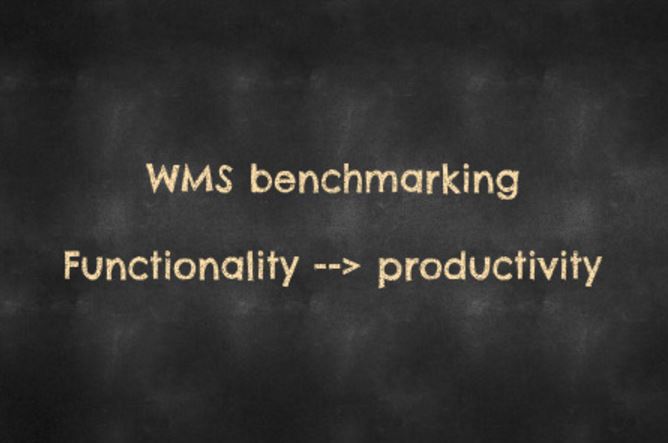

The UniPro group’s annual tradeshow took place in Palm Beach from May 9th-11th. In preparation for the show, LIDD launched the second edition of its WMS assessment report. We designed the report to better understand how companies in the foodservice industry are using their warehouse management systems. This year we focused on the relationship between WMS functionality and warehouse performance.
We ask a series of questions on the functionality of their WMS. Using the responses, we develop a score for each participant and a benchmark for the group as a whole. This year, the benchmark was 45.1%, meaning the average company uses less than half of what a standard WMS offers. Then we looked at the productivity for companies that scored above and below this benchmark. The results were very interesting:
| Companies Below Benchmark | Benchmark | Companies Above Benchmark | |
| WMS Functionality Score | 26% | 45% | 63% |
| Cases Shipped per Selector Hour | 53 | 85 | 116 |
| Cases Shipped per Hour (All Whse) | 27 | 35 | 43 |
| Selector Hours as % All Hours | 58% | 48% | 37% |
| Cases Shipped per Sq.Ft. | 13 | 24 | 35 |
As it turns out, companies performing above the benchmark get more out of their employees & storage space than companies with a lower WMS score. Let’s take a closer look at the gap between our “Above Benchmark” group and our “Below Benchmark” group:
- Companies above the benchmark are shipping 63 more cases per order selector hour, almost equivalent to a 120% productivity increase vs companies below the benchmark
- In terms of DC space utilization, above benchmark companies are shipping cases at a rate nearly three times higher than below benchmark companies
You might be saying to yourself, “Obviously companies with more functional WMS’ have a more productive DC”, and initially, that is what I said too. But let me bring up an important caveat; there are many other factors that are driving these thought-provoking statistics:
- Shipping volumes
- Order profiles
- SKU counts
- Layout
- Slotting
- Management
Still, a highly functional WMS is a necessary condition for a highly productive DC.
No matter how awesome your warehouse employees are, a WMS enables them in ways they cannot themselves. Let’s look back to the table. The most productive DC’s use 37% of their work hours for picking, compared to 58% for less productive DC’s. They invest these hours to perfect the processes surrounding picking, in order to create efficient picking. Picking is at the heart of every DC’s productivity and it’s largely reliant on how the processes surrounding it are working. Effective receiving, putaway and replenishment result in a streamlined order selection process which sets up smooth loading and shipping.
To put things into perspective, to ship 10,000 cases, companies below the benchmark:
- Need 6 extra workers
- Need 500 more square feet
So how important is a highly functional WMS? Very, very important.
If you'd like to know your WMS Functionality Score just drop me a line or call me at (514) 933-8777 ext. 120 to get access to the WMS Benchmark Assessment.
Or check out our eBook Keys to a Successful WMS to get some helpful tips on how to properly assess the functionality of your technology systems.
